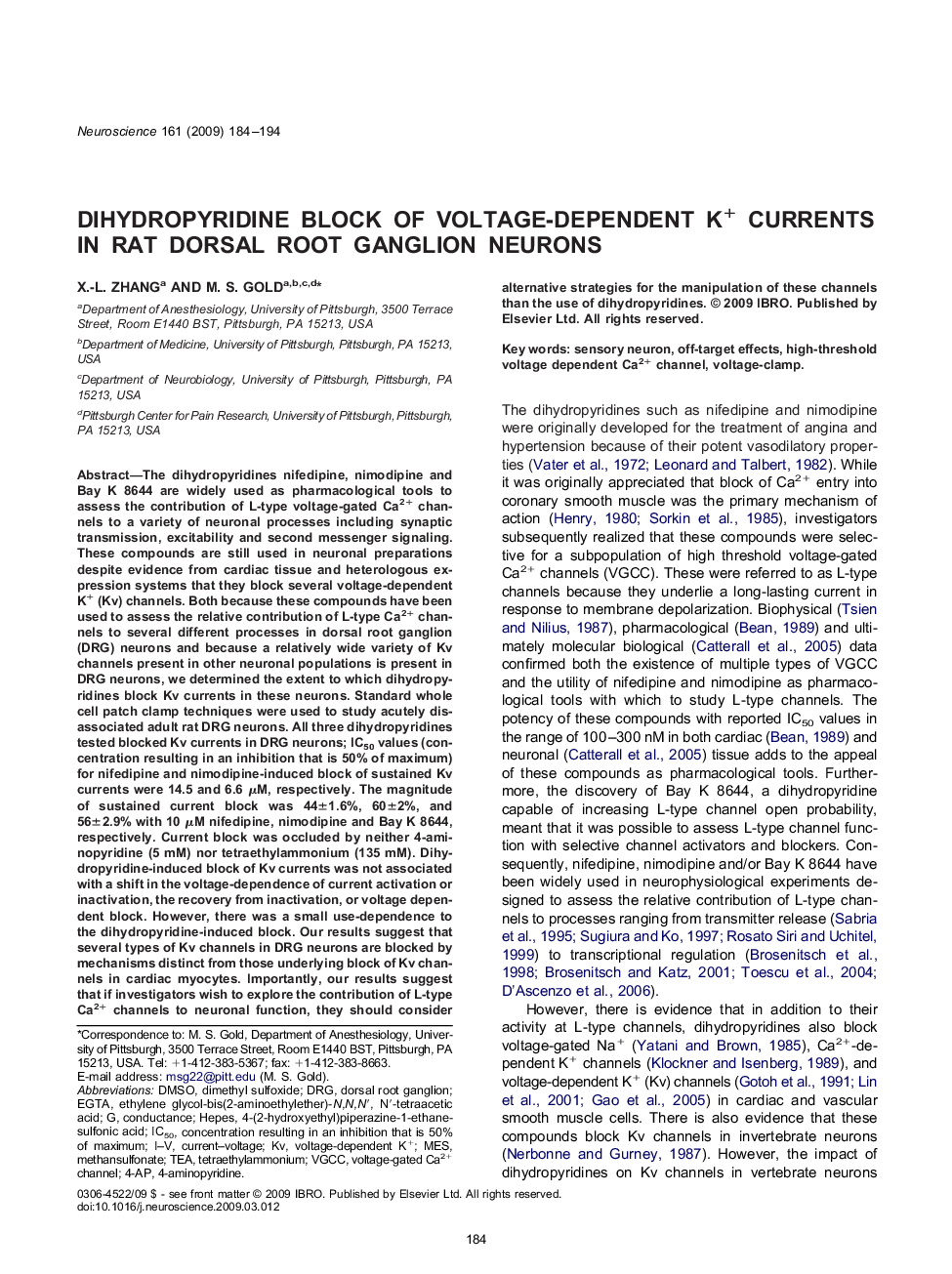| Article ID | Journal | Published Year | Pages | File Type |
|---|---|---|---|---|
| 4339912 | Neuroscience | 2009 | 11 Pages |
Abstract
The dihydropyridines nifedipine, nimodipine and Bay K 8644 are widely used as pharmacological tools to assess the contribution of L-type voltage-gated Ca2+ channels to a variety of neuronal processes including synaptic transmission, excitability and second messenger signaling. These compounds are still used in neuronal preparations despite evidence from cardiac tissue and heterologous expression systems that they block several voltage-dependent K+ (Kv) channels. Both because these compounds have been used to assess the relative contribution of L-type Ca2+ channels to several different processes in dorsal root ganglion (DRG) neurons and because a relatively wide variety of Kv channels present in other neuronal populations is present in DRG neurons, we determined the extent to which dihydropyridines block Kv currents in these neurons. Standard whole cell patch clamp techniques were used to study acutely disassociated adult rat DRG neurons. All three dihydropyridines tested blocked Kv currents in DRG neurons; IC50 values (concentration resulting in an inhibition that is 50% of maximum) for nifedipine and nimodipine-induced block of sustained Kv currents were 14.5 and 6.6 μM, respectively. The magnitude of sustained current block was 44±1.6%, 60±2%, and 56±2.9% with 10 μM nifedipine, nimodipine and Bay K 8644, respectively. Current block was occluded by neither 4-aminopyridine (5 mM) nor tetraethylammonium (135 mM). Dihydropyridine-induced block of Kv currents was not associated with a shift in the voltage-dependence of current activation or inactivation, the recovery from inactivation, or voltage dependent block. However, there was a small use-dependence to the dihydropyridine-induced block. Our results suggest that several types of Kv channels in DRG neurons are blocked by mechanisms distinct from those underlying block of Kv channels in cardiac myocytes. Importantly, our results suggest that if investigators wish to explore the contribution of L-type Ca2+ channels to neuronal function, they should consider alternative strategies for the manipulation of these channels than the use of dihydropyridines.
Keywords
Related Topics
Life Sciences
Neuroscience
Neuroscience (General)
Authors
X.-L. Zhang, M.S. Gold,
